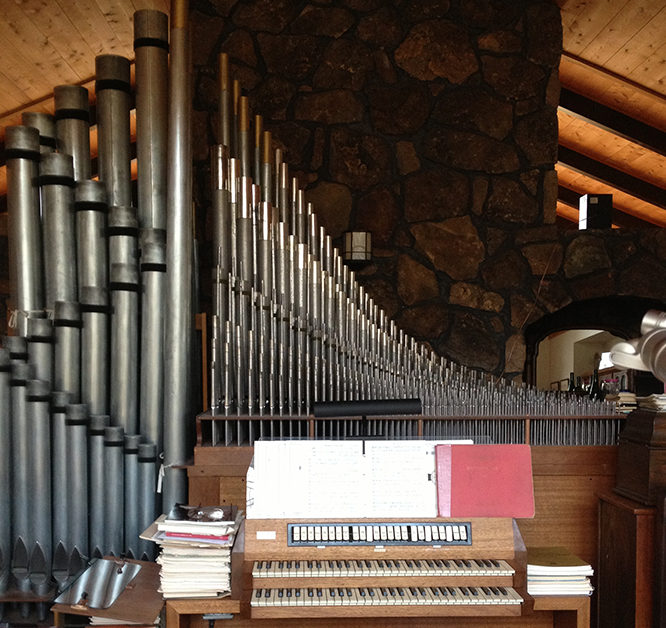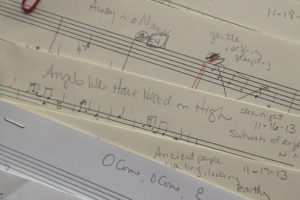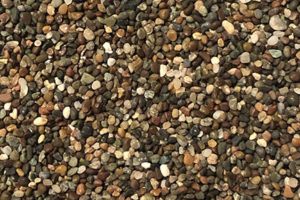The Making of Noël Nouvelet!
Christmas music arranged and written by Peg Thompson
We are better throughout the year for having, in spirit,
become a child again at Christmastime.
— Laura Ingalls Wilder (1867-1957) American writer known for the
Little House on the Prairie series of children’s books
After I made my first Christmas CD in 2013, I was eager to make another in 2015. At this point, I was working a full-time office job, came home tired every evening, and did not know if my sophomore effort could be as good as the first. I forced myself to sit down at the piano and search for inspiration. The charming melodies provided motivation and creative ideas. In fact, after I began working on them each evening the music gave me energy to work.
I believe this second CD is just as beautiful as the first. I call these “classic carols with a fresh twist!” Again, the instrumentations vary from solo piano to Renaissance flavored settings using harpsichord or organ with various percussion instruments and recorder.
A brief look at the inspiration behind the arrangements—
1. Noël Nouvelet! (French Carol)
This sprightly traditional carol from the 15th century felt earthy and inspired me to use the hand drums, flowing harpsichord lines along with the harp, concertina, recorder, string bass, finger cymbals, and tambourine.
2. Savior of the Nations, Come! (German Carol; based on a plainsong melody)
This plainsong melody expresses the mystery and longing for the savior to come to earth. I chose a haunting quality for the music to reflect this awe and expectancy.
3. God Rest You Merry, Gentlemen (English Carol)
The simple piano lines and unusual harmonies reflect the “olden” quality of the tune I wanted to highlight.
4. The Holly and the Ivy (English Carol)
By using organ, harp, hand-drum, tambourine, and finger cymbals I wanted to express how peasants might have played music and danced to this traditional British carol.
5. Lo! How a Rose, E’er Blooming (German Carol; Praetorius, 1609)
The rose is symbolic of the Virgin Mary. The tenderness and love of the mother of God is miraculous and mysterious. The rich, yet simple sounds create an aura of wonderment and reverence. I particularly love the use of the wind chimes and finger cymbals in this arrangement.
6. Deck the Hall with Boughs of Holly (Welsh Carol)
Who doesn’t enjoy pulling out all the greenery and ornaments to decorate at Christmastime! The pizzicato strings in the opening create a cheerful, fun mood. I continue this with fun motives and instrumentation which build on the pizzicato strings.
7. Variations on Good King Wenceslas (English Carol) (14th century, Piae Cantiones, 1582)

These variations for harpsichord were inspired by imagining a court musician playing music for the king. The style is reminiscent of François Couperin.
8. Joseph, dearest Joseph Mine (Resonet in laudibus) (15th c. German Carol)
Mystical and sweet, this arrangement reflects the love surrounding this intimate moment. In the opening of verse one Mary entreats Joseph: “Joseph dearest, Joseph mine, help me cradle the child divine.” In verse two Joseph responds: “Gladly, dear one, lady mine help I cradle this child of thine: God’s own light on us both shall shine in paradise, as prays the mother Mary.”
9. Ding! Dong! Merrily On High (Thoinot Arbeau, 1520-95)
The tune was originally a secular dance tune. This guided in my choice of instrumentation by using harpsichord, recorders, string bass, glockenspiel, finger cymbals, and tambourine. Rollicking and joyous is the mood!
10. O Little Town of Bethlehem (Lewis Henry Redner, 1868)
Being one of the later carols (from the 19th century), I wanted to reflect that by using solo piano and rich, lush harmonies. Also depicted is the endearing love for Bethlehem, the place of Jesus’ birth. “O little town of Bethlehem . . . Yet in thy dark streets shineth, The everlasting Light, The hopes and fears of all the years, Are met in thee tonight”
11. The Stars Shone Bright (original song by Peggy A. Thompson)
This original song was inspired by the images of the stars, sky, and the lovely scene of Jesus in the manger. It is dedicated to my vocal coach and dear friend, Ron Browning.
THE STARS SHONE BRIGHT
The stars shone bright
in the sky that night,
All the earth was washed in the glow;
The hope of peace came down that night
For all the world to know.
That night was born a little child,
Bringing the world God’s grace.
The angels sang, the shepherds came
To see God’s human face.
Copyright © 2015 Peggy A. Thompson. All Rights Reserved.
12. Tomorrow Shall Be My Dancing Day (English Carol)
This lovely carol brings to mind an image of dancing and twirling with joyous grace and beauty.
13. The First Nowell! (English Carol)
This piano arrangement is simple and straightforward like that first night in the stable.
A brief look at the history of the carols—
1. Noël Nouvelet! (French Carol)
This traditional French carol dates from the late 15th century and the early 16th century. The word nouvelet has the same root as Noël. Both stem from the word for news. The lyrics celebrate the figures of the traditional creche—the handmade nativity scenes found throughout France. They were a part of the Christmas celebration in homes and in town squares. This song would be sung by families at home and at community gatherings rather than as part of the liturgy in Roman Catholic churches at that time.
2. Savior of the Nations, Come! (16th c. German Carol; based on a plainsong melody)
Ambrose of Milan (c. 340-397) is known as the father of Latin hymnody and standardized the form known in modern English hymnody as “Long Meter” – four lines of iambic tetrameter. His hymns were meant for congregational participation and are characterized by their simplicity, austerity, and objectivity. Though many hymns are attributed to Ambrose, this is one of a few that are evidentially attributed to Ambrose. The tune is based on a plainsong melody first found in the 12th or 13th century.
3. God Rest You Merry, Gentlemen (English Carol)
This is a traditional English Christmas carol and is one of the oldest extant carols, dated to the 16th century or earlier. The carol is referred to in Charles Dickens’ 1843 A Christmas Carol.
4. The Holly and the Ivy (English Carol)
A traditional British folk Christmas carol, the words occur in three broadsides published in the early nineteenth century. The usual melody for the carol was first published in Cecil Sharp’s 1911 collection “English Folk-Carols.” Holly is commonly referenced at Christmastime, and is often referred to by the name Christ’s thorn. Since medieval times the plant has carried a Christian symbolism. The holly represents Jesus and the ivy represents the Virgin Mary.
5. Lo! How a Rose, E’er Blooming (German Carol; Praetorius, 1609)
This carol is a Marian Hymn of German origin. (“Es ist ein Ros entsprungen”) The rose in the text is symbolic of the Virgin Mary. The hymn also makes reference to the Old Testament prophecies of Isaiah which in Christian interpretation foretell the Incarnation of Christ, and to the Tree of Jesse, a traditional symbol of the lineage of Jesus. Because of its prophetic theme, the song is popular during the Christian season of Advent. The hymn first appeared in print in 1599. It is commonly sung to a melody which was harmonized by German composer, Michael Praetorius in 1609.
6. Deck the Hall with Boughs of Holly (Welsh Carol)
The English lyrics were written by the Scottish musician Thomas Oliphant. They first appeared in 1862 in Volume 2 of Welsh Melodies, a set of four volumes authored by John Thomas. The melody is taken from “Nos Galan’ (“New Year’s Eve”), a traditional Welsh New Year’s Eve carol published in 1794, although it is probably much older.
7. Variations on Good King Wenceslas (English Carol) (14th century, Piae Cantiones 1582)
The melody is a 13th century spring carol “Tempus adest floridum” first published in the 1582 Finnish song collection “Piae Cantiones.” The carol tells the story of a Bohemian king going on a journey during harsh winter weather to give alms to a peasant on the Feast of Stephen (December 26). The “Wenceslas” lyric was written in 1853 by English hymn writer John Mason Neale and music editor Thomas Helmore.
8. Joseph, Dearest Joseph Mine (Resonet in laudibus) (15th c. German Carol)
The melody first appeared in the Moosburg Gradual of 1360. It was widely known in medieval Europe and was printed in the 15th, 16th, and 17th centuries in both Catholic and Lutheran traditions. The melody was used in Germany for the song “Joseph, lieber Joseph mein” (“Joseph dearest, Joseph mine”).
9. Ding! Dong! Merrily On High (Thoinot Arbeau, 1520-95)
The tune first appeared as a secular dance tune known as “Branle de l’Official.” It was included in a dance book written by Jehan Tabourot (1519-1593). The lyrics were written by George Ratcliff Woodward (1848-1934). The carol was first published in 1924.
10. O Little Town of Bethlehem (Lewis Henry Redner, 1868)
Redner’s tune, simply titled “St. Louis”, is the tune used most often for this carol in the United States. He composed the melody in 1868 to the text written by Phillips Brooks, an Episcopal priest. Brooks was inspired to write the poem after a visit to Bethlehem in 1865.
11. The Stars Shone Bright (original song by Peggy A. Thompson)
I wrote this song to be included on this CD. I wanted to paint a picture of the scene that night of Jesus’ birth.
12. Tomorrow Shall Be My Dancing Day (English Carol)
This English carol first appeared in written from in 1833. It is most certainly from a much earlier date. The lyrics hint at possible origins in the Medieval mystery play.
13. The First Nowell! (English Carol)
This carol is a traditional English carol with Cornish origins. Nowell is an early modern English synonym for “Christmas” which comes from the French “Noel” meaning “the Christmas season.”










Leave a Reply
Your email is safe with us.